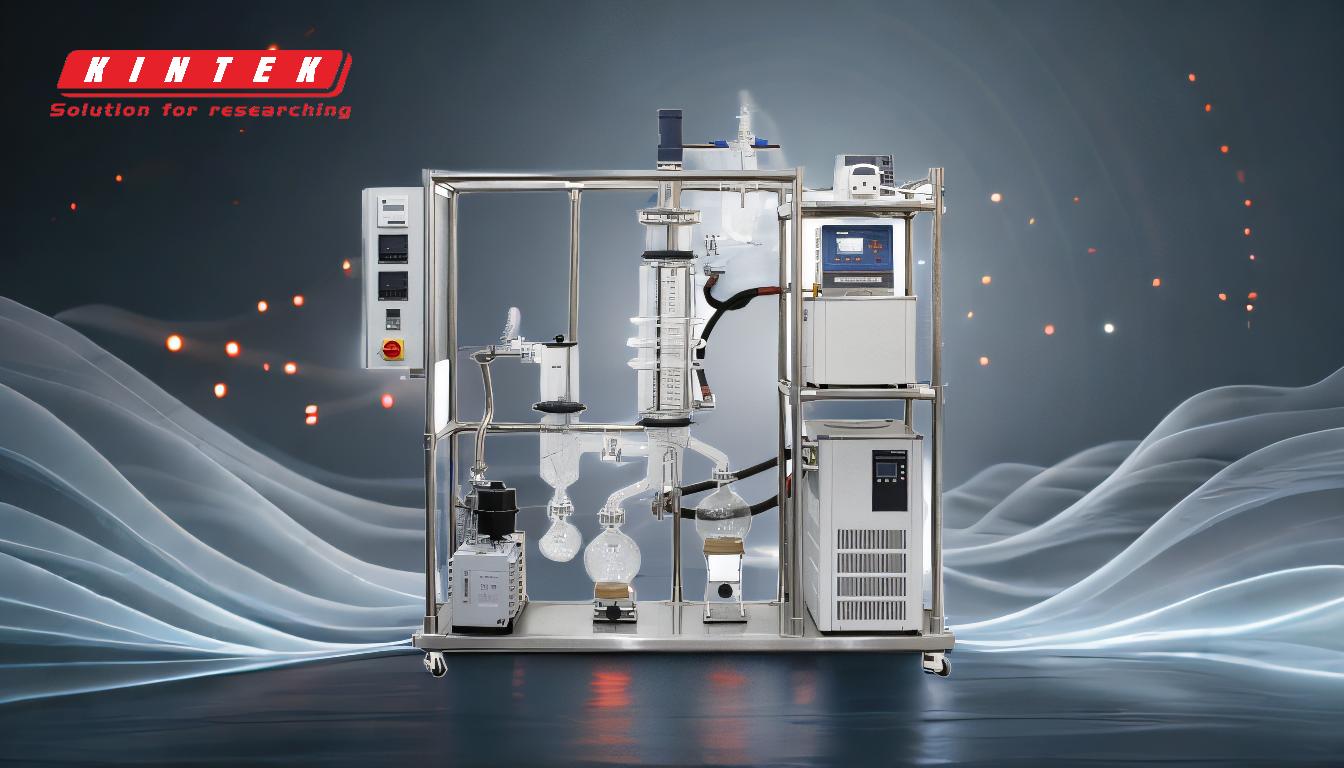Simple distillation is a fundamental laboratory technique used to separate liquids with significantly different boiling points. The process involves heating a liquid mixture to its boiling point, allowing the vapor to rise, condensing it back into a liquid, and collecting the purified substance. The four key steps of simple distillation are: molecular diffusion from the liquid phase to the evaporation surface, free evaporation from the liquid surface, movement of vapor molecules to the condensing surface, and condensation of the vapor into a liquid. These steps ensure the separation and purification of the desired compound. Below, the process is explained in detail, including practical considerations for setting up and performing the distillation.
Key Points Explained:

-
Molecular Diffusion from the Liquid Phase to the Evaporation Surface
- This step involves the movement of molecules from the bulk of the liquid mixture to the surface where evaporation occurs.
- The process is driven by thermal energy, which causes the molecules to move more vigorously as the liquid is heated.
- Molecules with lower boiling points reach the surface more readily, preparing them for evaporation.
- Practical Tip: Ensure the heating source (e.g., heating mantle) is set to an appropriate temperature (e.g., 60°C initially) to facilitate gradual and controlled diffusion.
-
Molecular Free Evaporation from the Liquid Layer Surface
- Once the molecules reach the surface, they gain enough energy to transition from the liquid phase to the vapor phase.
- This step is critical because it separates the lower-boiling-point compound from the mixture.
- The rate of evaporation depends on the temperature and the volatility of the compounds.
- Practical Tip: Use insulation (e.g., insulation rope) around the boiling flask to maintain consistent heating and prevent heat loss, ensuring efficient evaporation.
-
Movement of Vapor Molecules to the Condensing Surface
- After evaporation, the vapor molecules travel through the distillation apparatus (e.g., a Vigreux column or condenser) to the condensing surface.
- The design of the apparatus ensures that the vapor is directed efficiently toward the condenser.
- Practical Tip: Ensure all connections in the distillation setup are secure to prevent leaks, which could lead to loss of the desired compound or contamination.
-
Condensation of the Vapor into a Liquid
- The final step involves cooling the vapor to convert it back into a liquid. This is typically achieved using a condenser with circulating coolant (e.g., water).
- The condensed liquid, now purified, is collected in a separate flask.
- Practical Tip: Monitor the temperature carefully during condensation to ensure that only the desired compound is collected. Adjust the heating source if necessary to maintain a steady distillation rate.
Additional Considerations for Simple Distillation:
- Boiling Point Difference: Simple distillation is most effective when the boiling points of the liquids in the mixture differ by at least 70°C. This ensures clear separation and minimizes overlap in the collected fractions.
- Equipment Setup: Proper assembly of the distillation apparatus is crucial. This includes securing the boiling flask, condenser, and collection flask, as well as ensuring adequate insulation and temperature control.
- Temperature Control: Gradual heating is essential to avoid overheating, which can lead to decomposition of the compounds or uneven separation.
- Observation: Keep an eye on the distillation process, especially the Vigreux column, to monitor the reaction and adjust heating or cooling as needed.
By following these steps and considerations, simple distillation can effectively separate and purify liquids with distinct boiling points, making it a valuable technique in both laboratory and industrial settings.
Summary Table:
| Step | Description | Practical Tip |
|---|---|---|
| 1. Molecular Diffusion | Movement of molecules to the evaporation surface. | Set heating source to 60°C for controlled diffusion. |
| 2. Free Evaporation | Transition of molecules from liquid to vapor phase. | Use insulation to maintain consistent heating. |
| 3. Vapor Movement | Vapor travels to the condensing surface. | Secure connections to prevent leaks. |
| 4. Condensation | Vapor cools and converts back to liquid. | Monitor temperature to collect the desired compound. |
Need help setting up your distillation process? Contact our experts today for personalized guidance!











